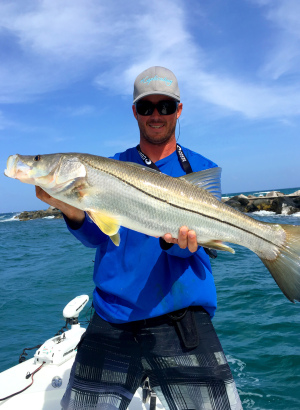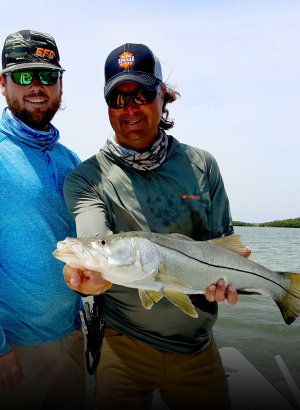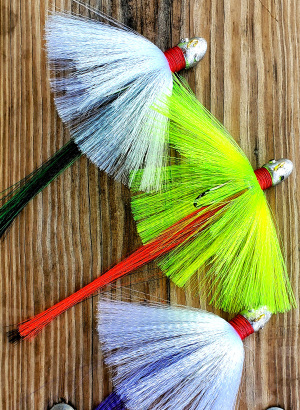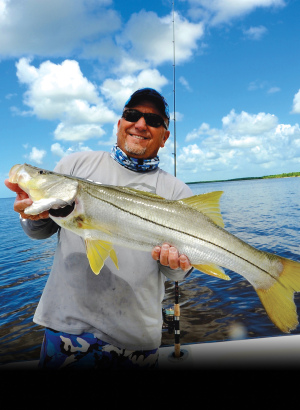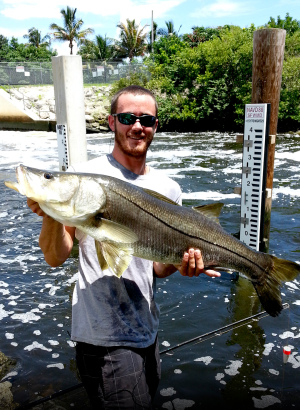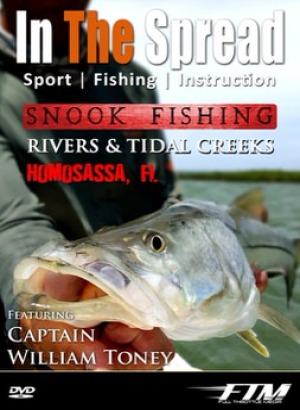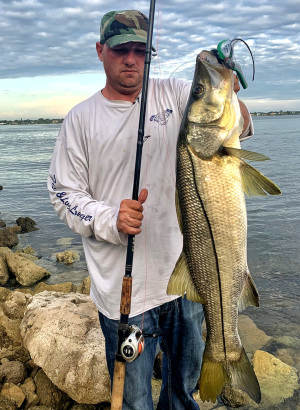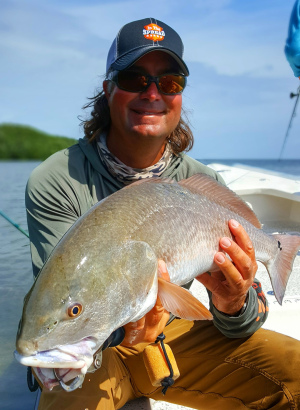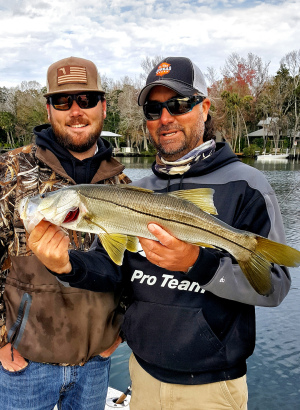Snook are saltwater game fish found in the Atlantic Ocean and Gulf of Mexico, known for their elongated bodies and distinct lateral lines. They are nocturnal feeders, active at dawn and dusk, and prefer shallow, brackish waters. Techniques, baits, lures, and tackle are discussed, along with regulations and catch-and-release benefits. Snook fishing is a popular sport among anglers.
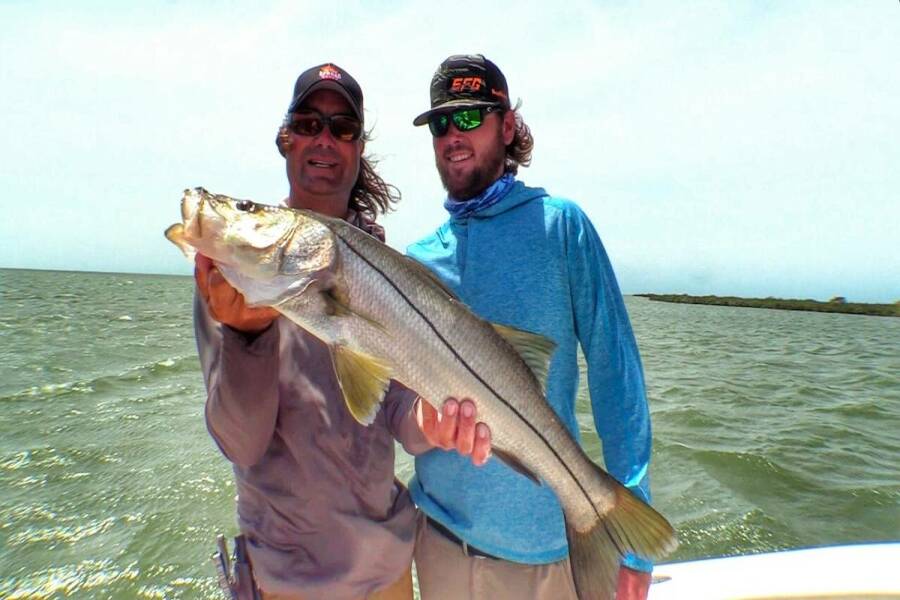
How to Catch Snook – Know the Species
Snook (Centropomus undecimalis) are a species of saltwater game fish that are primarily found in the Atlantic Ocean and Gulf of Mexico. They belong to the family Centropomidae and are known for their elongated bodies and distinct lateral lines. In this article, we will be discussing the different techniques, baits, lures, and tackle that can be used to catch snook, as well as the best times and locations for snook fishing. We will also cover the regulations surrounding snook fishing, as well as the benefits of catch-and-release. Snook fishing is a popular sport among anglers due to the excitement and challenge that comes with catching these elusive and powerful fish. Additionally, snook are known for their excellent fighting ability and are considered one of the most challenging game fish to catch. Whether you are an experienced angler or a beginner looking to learn more about snook fishing, this article will provide you with the information you need to improve your snook fishing skills.
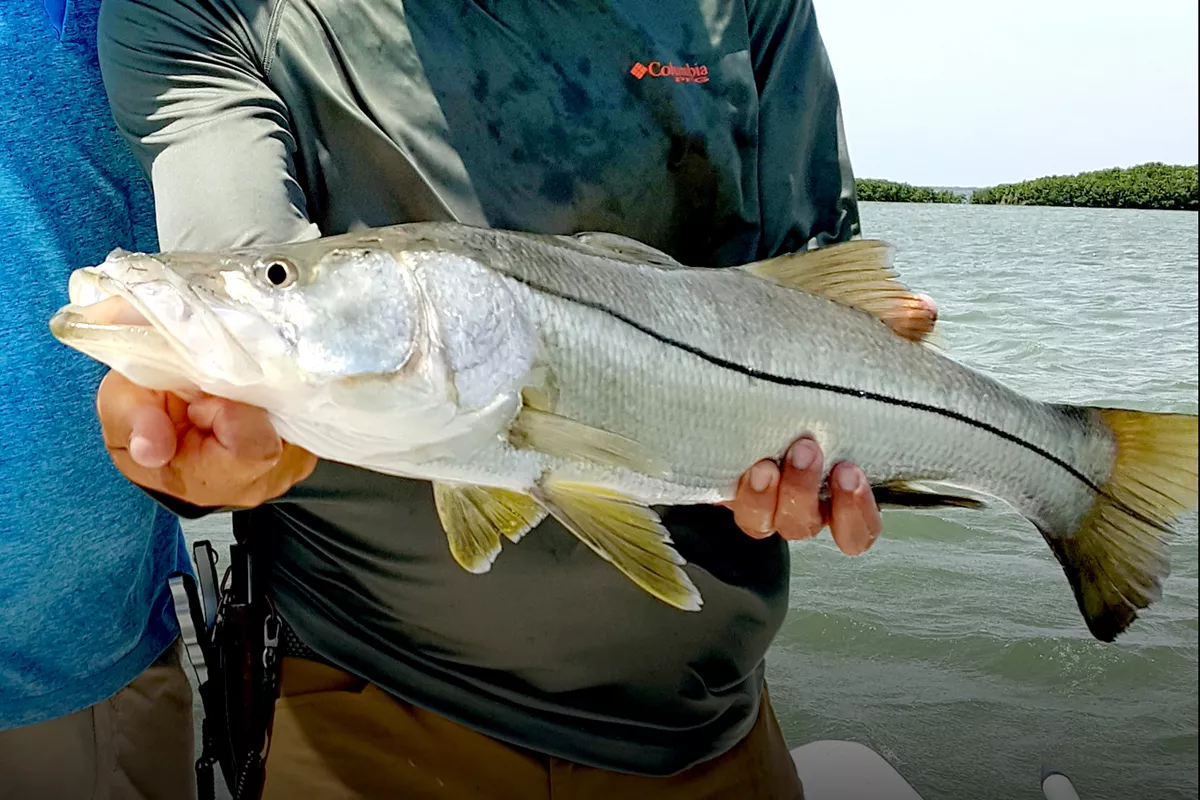
Understanding Snook
Snook are a predatory game fish that are found in the warmer waters of the Atlantic Ocean and Gulf of Mexico, particularly in the coastal regions of Florida. They are known for their elongated and streamlined bodies, and distinct lateral lines that run along their sides. Snook typically grow to be between 20 and 48 inches in length, and can weigh up to 50 pounds.
Snook prefer to live in shallow, brackish waters such as bays, estuaries, and inlets, but can also be found in deeper waters near reefs and wrecks. They are particularly fond of areas with structure such as docks, bridges, and mangrove shorelines, as these provide shelter and ambush points for their prey.
As primarily nocturnal feeders, snook and tend to be most active at dawn and dusk. They are opportunistic predators and will feed on a wide variety of prey, including shrimp, crabs, and small fish.
In Florida, snook fishing is regulated by the Florida Fish and Wildlife Conservation Commission (FWC). The season for snook fishing is typically open from March through November, but specific dates and regulations may vary depending on the location and species of snook. Additionally, there are size and bag limits in place to help protect the snook population and ensure sustainable fishing practices. It is important for anglers to be familiar with these regulations before heading out to fish for snook.
Where to Catch Snook
Snook are a highly sought-after game fish, and anglers can find them in a variety of locations throughout their range. Understanding the types of habitats where snook are most likely to be found can be key to successful snook fishing.
In general, snook prefer shallow, brackish waters with plenty of structure and cover. They are often found in inlets, estuaries, and canals, where they can ambush prey and find shelter from predators. Mangrove shorelines and grass flats can also be productive areas for snook fishing, as can bridges, docks, and other man-made structures.
In Florida, some of the best locations for snook fishing include the Ten Thousand Islands area in the southwest part of the state, the Everglades National Park, and the Indian River Lagoon on the east coast. In Texas, the Laguna Madre and the South Padre Island area are popular spots for snook fishing. Snook can also be found in other areas throughout the Gulf of Mexico and Atlantic Ocean.
When planning a snook fishing trip, it is important to do some research on the specific location and understand the local regulations and seasons for snook fishing. Local tackle shops and fishing guides can be a great resource for anglers looking to target snook in a new area.
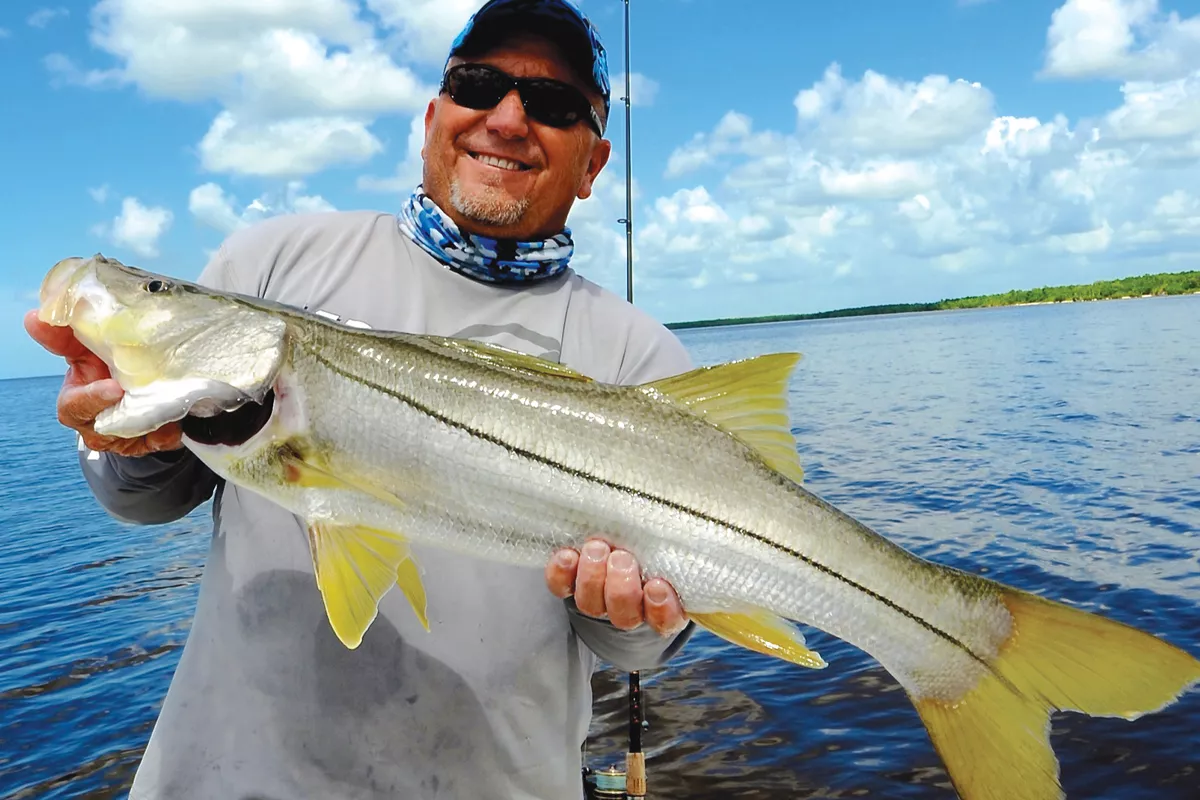
When to Catch Snook
Timing can be crucial when it comes to snook fishing, as these fish can be sensitive to changes in water temperature and other environmental factors. Understanding the best times of year and times of day for snook fishing can help increase the chances of a successful catch.
In general, snook fishing is most productive during the warmer months of the year. In Florida, the snook season runs from May 1 to August 31 and from December 1 to the end of February. However, the exact timing of the season can vary from year to year, and anglers should always check the latest regulations from the Florida Fish and Wildlife Conservation Commission (FWC) or local authorities before planning a fishing trip.
As for the best times of day for snook fishing, these fish are often most active during low light conditions, such as early morning or late evening. However, snook can also be caught throughout the day, especially in areas with plenty of cover and structure.
When planning a snook fishing trip, it is important to consider both the season and the time of day to increase the chances of a successful catch. Additionally, anglers should always be aware of the local regulations and follow best practices for catch and release to help protect the snook population for future generations of anglers.
Tackle for Snook Fishing
Choosing the right fishing tackle can make all the difference when it comes to snook fishing. Here are some tips for selecting the best gear for the job:
- Rods: Medium-heavy to heavy rods with a fast action are often ideal for snook fishing. The length of the rod can vary depending on the type of fishing being done, but a length of 7 to 8 feet is common.
- Reels: Baitcasting or spinning reels can both work well for snook fishing. When selecting a reel, look for one with a strong drag system and a high gear ratio.
- Lines: Braided lines with a test weight of 20 to 30 pounds are often recommended for snook fishing. However, the specific line weight will depend on the size of the fish being targeted and the type of fishing being done.
- Leaders: Fluorocarbon leaders with a test weight of 30 to 50 pounds are often used for snook fishing. However, the leader weight can vary depending on the size of the fish being targeted and the fishing conditions.
- Hooks: Circle hooks are a popular choice for snook fishing, as they are less likely to cause injury to the fish and make catch-and-release easier. When selecting a hook, look for one with a sharp point and a strong shank.
- Wire Leader: The use of a wire leader is not always necessary for snook fishing, but it can be helpful in areas with sharp rocks or other types of structure that can damage the leader. If using a wire leader, look for one with a test weight of 30 to 50 pounds.
By selecting the right fishing tackle for the job, anglers can increase their chances of a successful snook fishing trip.
Bait and Lures for Snook
Snook are opportunistic feeders and will eat a variety of baits and lures. Here are some of the best options for catching snook:
- Live Bait for snook: Live bait is often the most effective option for snook fishing. The following are some of the best live baits for snook:
- Pinfish
- Sardines
- Threadfin herring
- Mullet
- Shrimp
- Artificial Lures for snook: Artificial lures are also effective for catching snook. This In The Spread fishing video shows several lures and lure fishing techniques Lure Fishing Techniques For Winter Snook. Here are some of the best lures to use:
- Bucktail jigs: Jigs are effective for catching snook, with bucktail jigs being one of the most popular options. Bucktail jigs are versatile and can be used in a variety of situations. White or chartreuse jigs are often the most effective colors.
- Soft plastic baits: Soft plastic baits mimic the movement of live bait and are often effective for snook. Shrimp, jerk baits, and paddle tails are popular options.
- Topwater lures: Topwater lures are effective for catching snook in shallow water or in areas with a lot of surface activity. The best colors for topwater lures are usually darker colors like black or blue.
- Crankbaits: Crankbaits can be effective for snook fishing in deeper water. Natural colors like green or brown are often the most effective.
- Best Color Lures for Snook: The best colors for snook lures can vary depending on location and time of day. In general, natural colors like green, brown, and white are often effective.
- How to Fish a Bucktail Jig for Snook: When fishing with a bucktail jig for snook, it's important to consider the weight of the jig, the speed of retrieval, and the depth of the water. Varying the speed and depth of retrieval can be effective in different situations

Techniques for Catching Snook
Snook fishing can be done using a variety of techniques, depending on the location, time of day, and the type of bait or lure being used. Some of the most effective techniques for catching snook are:
- Casting: This involves using a fishing rod to cast a bait or lure out into the water, and then reeling it back in. Casting is a popular technique for catching snook in open water and around structure such as docks, piers, and bridges.
- Jigging: Jigging involves using a weighted lure, such as a bucktail jig, to imitate the movement of a baitfish. This technique is especially effective for catching snook around structure and in deeper water. This is one the most comprehensive videos on fishing snook jigs How To Catch Snook Jig Fishing With SlobRob.
- Trolling: Trolling involves dragging a bait or lure behind a boat at a slow speed. This technique is effective for covering a large area and can be used to catch snook in open water and around structure.
- Topwater Lures: Topwater lures, such as poppers and stickbaits, are designed to float on the surface of the water and create a commotion that attracts snook. This technique is most effective during low-light conditions and when the water is calm.
- Soft Plastic Baits: Soft plastic baits are designed to imitate the movement of a baitfish or shrimp. They can be rigged weedless or on a jig head and fished along the bottom or through structure.
When fishing for snook with different types of lures, it is important to use the right technique to get the desired action from the lure. For example, when fishing with a bucktail jig, it is important to jig the lure up and down to imitate the movement of a baitfish.
Tips for using different techniques effectively
- Pay attention to the tide and current: Snook tend to feed more actively during moving tides, so it is important to fish during incoming or outgoing tides.
- Use light tackle: Snook are known for their strong, acrobatic fights, so it is important to use light tackle to enjoy the fight.
- Keep your bait or lure in the strike zone: Snook often hold tight to structure, so it is important to cast your bait or lure close to the structure and keep it in the strike zone as long as possible.
Fishing for snook in canals and spillways can be very productive, especially during the colder months. Snook often seek refuge in these areas to escape the colder water temperatures. When fishing in canals and spillways, it is important to look for areas with structure and to use techniques that allow you to fish close to the structure.
Best practices for catching and releasing snook
When fishing for snook, it's crucial to equip yourself with suitable tackle and gear to minimize stress on the fish. Remember to wet your hands before handling them and steer clear of their gills. Employ tools like pliers or a de-hooking device for safe hook removal. Gently hold the fish upright in the water, supporting it until it regains enough strength to swim off. Also, be mindful of fishing regulations; refrain from keeping oversized snook or snook during closed seasons, as this helps conserve the fish population for future anglers.
Locations for Snook Fishing
- Best locations for snook fishing in Florida
- Inlets and passes: Inlets and passes are some of the most popular places to catch snook in Florida. These areas provide easy access to deeper water and are ideal feeding grounds for snook. To learn more about how to precisely fish inlets for snook, check out Inlet Fishing For Snook Fish
- Mangrove-lined estuaries and bays: Snook are often found in shallow, brackish water in mangrove-lined estuaries and bays. These areas provide protection and plenty of food for the fish.
- Bridges and docks: Bridges and docks provide structure and cover for snook, making them excellent places to fish for this species. The shade provided by these structures also helps keep the water temperature cooler, which snook prefer.
- Beaches and nearshore waters: Snook can also be caught in nearshore waters and along the beaches. Look for areas with sandbars, troughs, and drop-offs where snook can ambush their prey.
- Snook fishing in Texas
- Best locations along the Gulf Coast: The Gulf Coast is the best place to catch snook in Texas. Look for areas with ample structure and food sources, such as jetties, oil rigs, and reefs.
- Bay systems and tidal rivers: Snook can also be found in bay systems and tidal rivers, particularly around structures such as docks and piers.
- Nearshore structures and jetties: Nearshore structures, including jetties and breakwaters, can provide excellent opportunities to catch snook. Look for areas where the current is strong and baitfish are abundant.
- Finding snook in canals and spillways
- Why snook are attracted to these areas: Canals and spillways provide snook with shelter and an abundant food supply. Snook can also find refuge from changing tides and strong currents in these areas.
- Spillways can attract snook because they create areas with fast-moving water and high oxygen levels. Snook are known to be attracted to areas with moving water, as it can help them ambush prey and provide an opportunity to feed. In addition, the high oxygen levels in the water can be particularly beneficial for snook, as they require a lot of oxygen to survive. When water spills over a spillway, it creates turbulence and increases the amount of dissolved oxygen in the water, which can be particularly appealing to snook. As a result, spillways can be productive areas to target when fishing for snook. This video is perhaps the standard for how to fish spillways for snook Snook Fishing Florida Spillways.
- Tips for locating snook in canals and spillways: Look for areas with deep water, especially around bends in the canal or spillway. Focus on areas with ample structure, including pilings, docks, and other submerged objects.
Tips for Successful Snook Fishing
- Timing: The best time of day for snook fishing is during the low light periods of dawn and dusk when snook are most active. The best tide to fish for snook is an incoming tide, especially during a new or full moon.
- Weather: Snook fishing is best when the water temperature is between 70-85 degrees Fahrenheit. A slight chop on the water can help to stir up baitfish and make it easier for snook to find and strike.
- Location: Look for areas where snook are known to congregate, such as inlets, passes, mangrove-lined estuaries, bridges, docks, and nearshore waters. Canals and spillways can also be productive spots.
- Bait: Use live bait such as pilchards, threadfin herring, or mullet for the best chance of success. If using artificial lures, try topwater plugs, soft plastic baits, or bucktail jigs.
- Hooking big snook: To catch larger snook, use heavier tackle and larger baits. When casting, try to make accurate casts to specific spots, such as under a dock or into a narrow channel.
- Be patient and persistent: Snook can be finicky and selective about their food, so it's important to be patient and try different baits, lures, and techniques until you find what works.
- Practice catch-and-release: Snook are an important game fish, and it's important to handle them carefully and release them unharmed whenever possible. Use circle hooks to minimize damage to the fish, and avoid lifting them out of the water.
Eating and Catch-and-Release
In The Spread: The Best Resource for Learning How to Catch Snook
"In The Spread" stands out as a premier online destination for anglers eager to refine their snook fishing prowess. This platform is a treasure trove of educational content, featuring an extensive collection of videos and tutorials dedicated to the art of snook fishing. These resources, enriched with insights from top-tier snook fishing experts, are designed to elevate your fishing game.
Subscribing to "In The Spread" opens up a world of learning opportunities for anglers. Its comprehensive video library spans a wide array of snook fishing topics, from selecting the right bait and lures to mastering various fishing techniques and identifying prime fishing spots. Moreover, these videos aren't just informative—they're guided by some of the world's most accomplished snook fishermen, offering a blend of personal experiences, in-depth knowledge, and professional expertise.
The advantages of using our videos are manifold. Anglers benefit from the wisdom of seasoned professionals, gain access to a diverse array of fishing techniques and strategies, and enjoy the flexibility of learning at their own pace. The platform also fosters a vibrant community where anglers can connect, exchange experiences, and grow together.
To sum up, we are an invaluable asset for anyone keen on advancing their snook fishing skills. It not only provides a rich repository of educational content and insights from world-class fishermen but also cultivates a community where like-minded enthusiasts can thrive.
The article delves into the captivating realm of snook fishing, a sport celebrated for its thrill and complexity. It sheds light on key aspects such as the optimal times for fishing, the most effective tackle and techniques, and the prime locations to find snook. It also emphasizes the importance of ethical practices like proper handling and release of snook, underscoring the role of resources like "In The Spread" in enhancing one's fishing acumen.
In essence, snook fishing emerges as a fulfilling and intricate pursuit, combining the joy of landing a stunning and elusive fish with the beauty of some of the world's most picturesque fishing spots. It's a pursuit that demands patience, dedication, and skill, offering a rewarding experience to those who venture into this exciting sport. With the right guidance and gear, anyone can embark on the journey of becoming a proficient snook fisherman, experiencing the exhilaration of catching these magnificent creatures.

